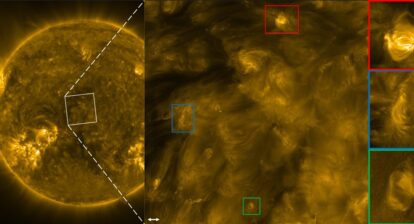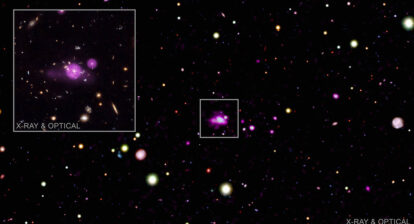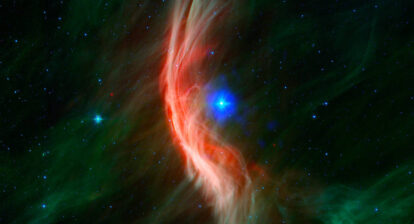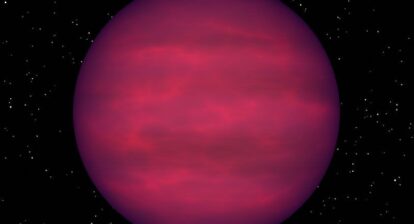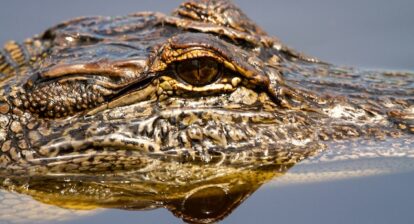A Potato Shaped Galaxy has been observed by telescopes
There are approximagely 1 trillion galaxies in the Universe and they generally tend to present in a few basic shapes. This fact was established by astronomer Edwin Hubble in the early 20th century. Even though the Universe is three-dimensional, galaxies look flat when observed from Earth. This is due to the vast distances between us and them.
But now astronomers have attempted to observe the true shape of an elliptical galaxy, using the Hubble Space Telescope and the Keck Observatory in Hawaii.
According to the NASA News release: “They picked one of the nearest elliptical galaxies to Earth, M87, located 55 million light-years away in the heart of the vast Virgo cluster of galaxies. By following the motion of stars around the center of M87, like bees around a hive, they’ve measured that the galaxy looks potato-shaped. It not only has a long and short axis, which defines an ellipse on a piece of graph paper, but they measured a third axis which helps define the three-dimensionality. The geometric term is: triaxial.”

Hubble Image and New 3D model of elliptical galaxy M87
Figuring out the real shape of a huge elliptical galaxy will help astronomers understand how such giant structures and their resident black holes form.
To do this: “Scientists made the 3D plot by measuring the motions of stars that swarm around the galaxy’s supermassive central black hole. The stellar motion was used to provide new insights into the shape of the galaxy and its rotation, and it also yielded a new measurement of the black hole’s mass. Tracking the stellar speeds and position allowed researchers to build a three-dimensional view of the galaxy.”
The mass of the central black hole was estimate to be 5.4 billion times the mass of the Sun. This is the same black hole that was imaged for the very first time in 2019 (the first ever image of a black hole) by the Event Horizon Telescope Collaboration. At that time its mass was calculated at 6.5 billion solar masses using Einstein’s theory of general relativity.
The stereo model of M87 and the more precise mass of the central black hole could help astrophysicists learn the black hole’s spin rate. “Now that we know the direction of the net rotation of stars in M87 and have an updated mass of the black hole, we can combine this information with data from the Event Horizon Telescope to constrain the spin,” said Chung-Pei Ma, a UC Berkeley lead investigator on the research.
According to a statement: “Ma, together with UC Berkeley graduate student Emily Liepold (lead author on the paper published in the Astrophysical Journal Letters) and Jonelle Walsh at Texas A&M University were able to determine the 3D shape of M87 thanks to a new precision instrument mounted on the Keck II Telescope. They pointed Keck at 62 adjacent locations of the galaxy, mapping out the spectra of stars over a region about 70,000 light-years across. This region spans the central 3,000 light-years where gravity is largely dominated by the supermassive black hole. Though the telescope cannot resolve individual stars because of M87’s great distance, the spectra can reveal the range of velocities to calculate mass of the object they’re orbiting.”
“It’s sort of like looking at a swarm of 100 billion bees,” said Ma. “Though we are looking at them from a distance and can’t discern individual bees, we are getting very detailed information about their collective velocities.”
“The researchers took the data between 2020 and 2022, as well as earlier star brightness measurements of M87 from Hubble, and compared them to computer model predictions of how stars move around the center of the triaxial-shaped galaxy. The best fit to this data allowed them to calculate the black hole’s mass.”
“Knowing the 3D shape of the ‘swarming bees’ enabled us to obtain a more robust dynamical measurement of the mass of the central black hole that is governing the bees’ orbiting velocities,” said Ma.
The research was published in The Astrophysical Journal Letters.

